Recombinant DNA
1/4
Name | Mastery | Learn | Test | Matching | Spaced |
|---|
No study sessions yet.
5 Terms
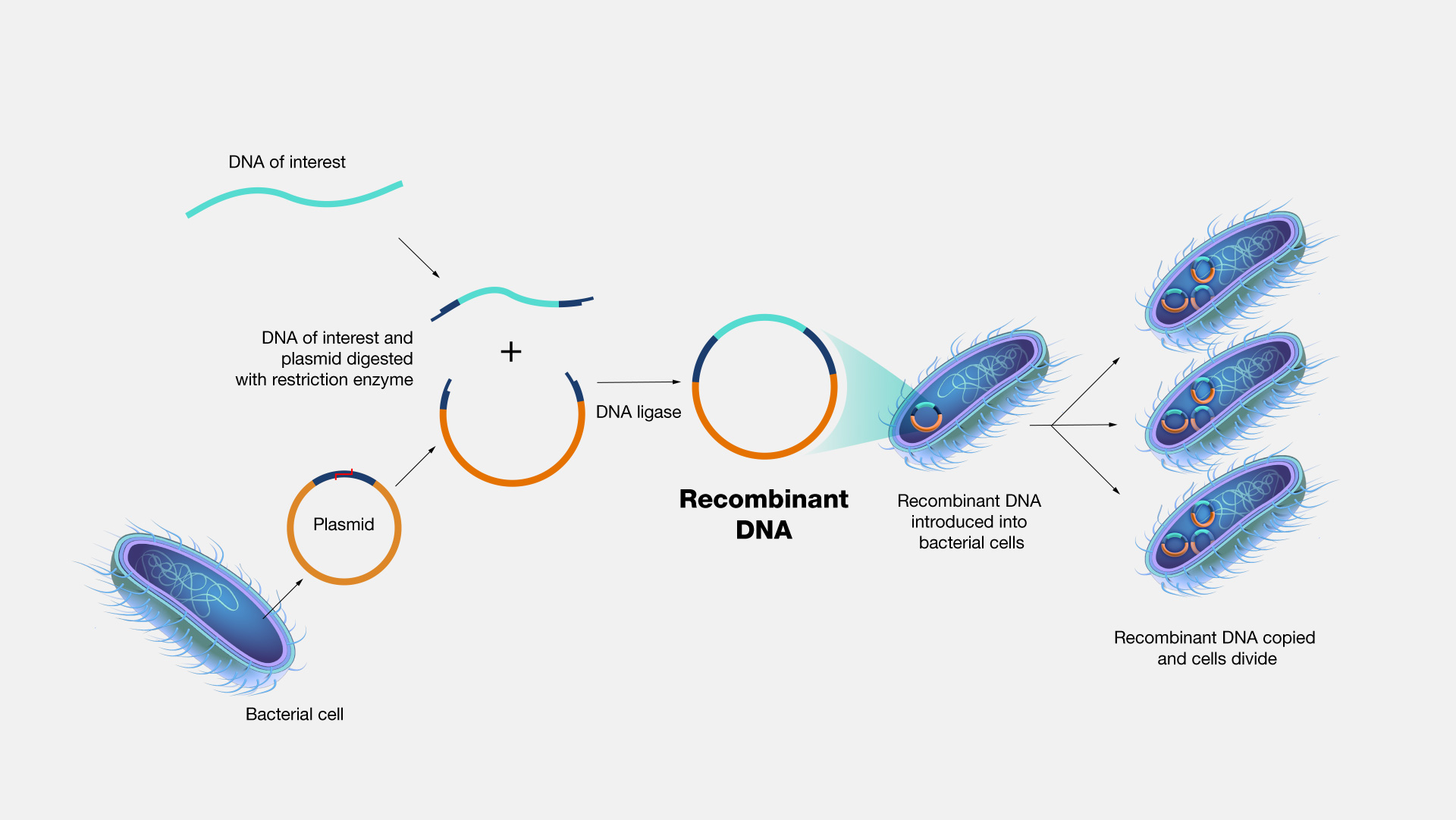
Recombinant DNA
A DNA segment (molecule) that is composed of DNA sourced from more than 1 organism.
Certain bacteria have restriction enzymes that recognize specific DNA sequences and cut them.
Allows DNA to be inserted and then resealed using DNA ligase (an enzyme that connects adjacent nucleotides)
All organisms have DNA ligase which normally functions to repair DNA damage.
Some viruses are able to insert their DNA into a chromosome in much the same way.
Using these enzymes produces recombinant DNA.
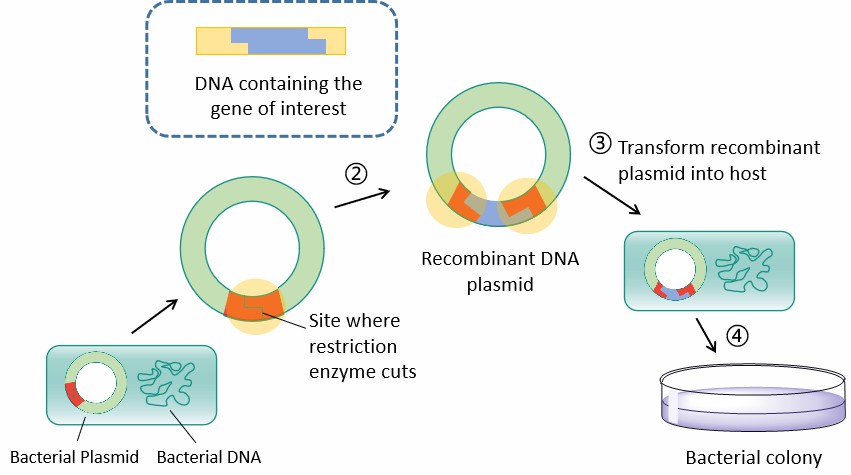
Produce proteins in bacteria
Use a restriction enzyme to cut the DNA segment with the desired characteristic.
Use the same restriction enzyme to cut the bacterial plasmid (a circular section of DNA that is too small to be considered a chromosome).
Allow the “sticky ends” of the cut DNA to pair with those of the plasmid.
Use DNA ligase to seal the bond.
Insert the plasmid into a bacterial cell.
Culture the bacterial vat (bacteria grow and reproduce in a large vat to synthesize the product encoded by the gene of interest).
Harvest the product made by the bacteria.
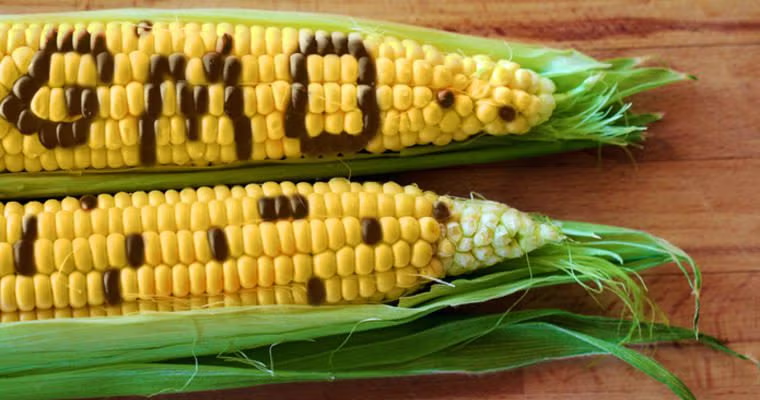
Transgenic organism
Bacteria contain recombinant DNA → The organisms contain DNA from other species and express new traits → Genetically modified organism.
Examples of products synthesized this way: insulin, vaccines, hormones, artificial sweeteners, and glue.
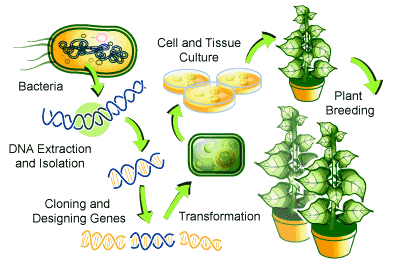
Alter agricultural crops (plants & animals)
Insert genes that provide resistance to harmful fungi, bacteria, pests, drought, salt, cold, etc.
Insert genes that cause the organisms to produce more crops (e.g., each genetically modified sunflower produces more seeds).
Insert genes that cause the organisms to produce new compounds that they did not have before (e.g., vitamins, minerals, medication, etc.)
→ Bananas that make a vaccine for hepatitis B or broccoli that tastes like chocolate.
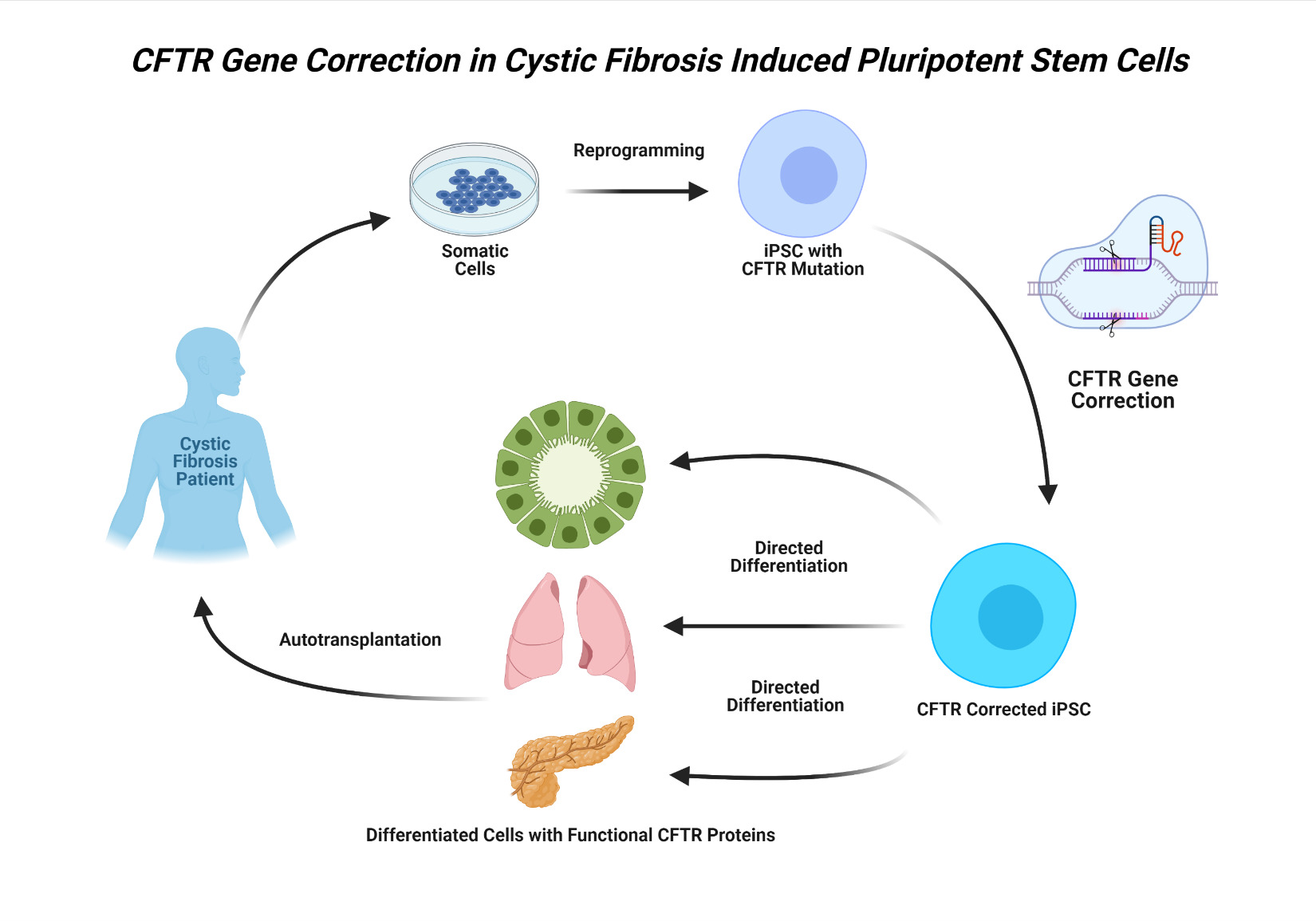
Replacement gene therapy
Replace the defective genes in humans with the non-mutated ones either in utero (when the fetus is still developing in a uterus) or just in the target tissue.
To fix all the copies of defective genes in billions of DNA in cells, one solution to treat cystic fibrosis, “virus aerosol”, is introduced.
Viruses with a gene-insertion mechanism are inhaled so that the respiratory tissue is exposed to the healthy gene.